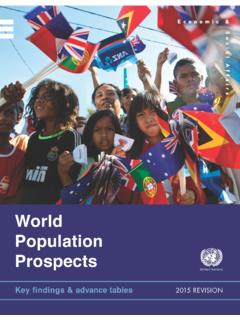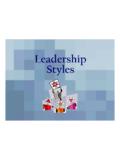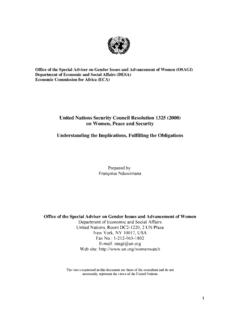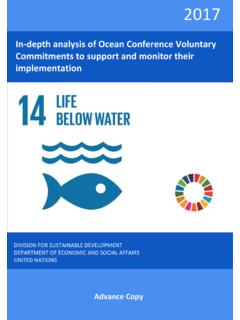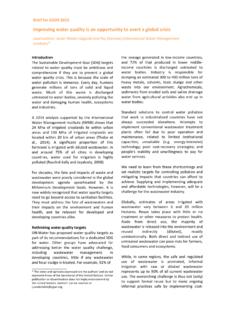Transcription of Final Report - Training of Philippine UNCT on IP …
1 Final Report of the Training -Workshop on Indigenous Peoples' Issues for the Philippine UN Country Team Date and Venue The Training -workshop took place on 2-4 September 2009 at the Taal Vista Hotel in Tagaytay City, around 70 kilometers south of Manila. The Training team arrived at the venue one day before, on 1 September 2009, in order to meet for fine-tuning of the agenda and coordination of facilitation. Training Team The members of the Training team were Ms. Jennifer Corpuz, Legal Desk Coordinator of Tebtebba Foundation and consultant of the UNPFII for facilitation of the Training -workshop; Ms. Chandra Roy, Programme Coordinator of the Regional Initiative on Indigenous Peoples' Rights and Development (RIPP) at the UNDP Regional Centre in Bangkok; Ms.
2 Beatriz Fernandez, Programme Specialist and IP Focal Person of UNDP in New York; and Ms. Jannie Lasimbang, Chairperson-Rapporteur of the UN Expert Mechanism on the Rights of Indigenous Peoples (EMRIP) of the UN Human Rights Council. Agenda The Training team agreed a draft agenda prior to the Training -workshop (attached as Annex 1), which was approved by the participants, as follows: Day 1 Opening and Introduction Concept of Indigenous Peoples International Norms and Standards UN Processes and Mechanisms Day 2 Indigenous Peoples in the Philippines Mapping Agency Initiatives Day 3 Indigenous Peoples and Development Making the MDGs More Relevant for Indigenous Peoples Designing Strategic Interventions Next Steps Adjustments had to be made to the agenda, in light of various considerations, such as the degree of tiredness of participants, who had travelled very early to the Training venue on Day 1.
3 And the desire of the participants to devote more time to mapping agency initiatives and designing strategic interventions. As a result, the agenda was modified as follows: Day 1 Opening and Introduction Concept of Indigenous Peoples International Norms and Standards Day 2 UN Processes and Mechanisms Indigenous Peoples and Development Indigenous Peoples in the Philippines Mapping Agency Initiatives Day 3 Designing Strategic Interventions Next Steps Presentation of Training -Workshop Results to Heads of Agencies Participants The Training -workshop was attended by eleven (11) UN Agencies and Bodies: FAO, IOM, UNCO, UNDP, UNEP, UNESCO, UNFPA, UNICEF, WFP, WHO, and the World Bank.
4 On the afternoon of Day 1, Dr. Jacqui Badcock, UN Resident Coordinator for the Philippines, addressed the Training -workshop. The list of participants is attached as Annex 2. Dr. Badcock again joined other heads of agencies on the afternoon of Day 3, where the trainers and participants had a chance to present the outcomes and recommendations from the Training -workshop, and the heads of agencies had a chance to comment on and fine-tune the recommendations. The Training -Workshop The Training -workshop was opened with an ice-breaker that required the participants to line up alphabetically by first name or nick name without talking. Ms. Chandra Roy then opened the session by welcoming the participants, asking participants and trainers to introduce themselves, and establishing the ground rules.
5 She then went on to the first session on the concept of indigenous peoples, beginning with a word-visualization exercise, where the participants were asked to say out loud the first word/s that came to their minds upon hearing the words indigenous peoples . The session established that there is no internationally agreed definition of the term indigenous peoples'' but that they share common characteristics. In the Philippines, discussed Ms. Jennifer Corpuz, the Indigenous Peoples' Rights Act contains a definition of indigenous peoples/indigenous cultural communities (IP/ICC) that combines elements from ILO Convention 169, the UN Declaration on the Rights of Indigenous Peoples, and the Martinez-Cobo working definition.
6 After the lunch break Ms. Roy presented the basic elements of the human rights based approach (HRBA) and asked the participants to divide themselves into three groups, with each group identifying actual UN projects on indigenous peoples, and discussing whether or not the project was HRBA-compliant. The groups then presented the result of their discussions, and the rest of the participants contributed their comments on each of the presentations. International norms and standards on indigenous peoples were presented using modified versions of the power point presentations that come with the UNPFII Training kit. Ms. Beatriz Fernandez presented the basic principles and overview, the history of indigenous peoples and the UN, and ILO Convention 169.
7 Ms. Corpuz then presented on the UNDRIP and the treaty-monitoring bodies. A case simulation was then carried out using a fictionalized case based on an actual case from the Subanon of Mount Canatuan in the Philippines. The participants were divided into two groups, one taking on the role of indigenous peoples and the other taking on the role of government. The groups identified and discussed amongst themselves the issues raised in the case study and tried to determine to what extent international norms and standards were being upheld in the case. They chose three to four representatives each to present their case at the dialogue. Following the presentations and debrief, the Training -workshop was closed for the day.
8 Day 2 began with a presentation on UN processes and mechanisms. Ms. Fernandez presented on the UN Permanent Forum on Indigenous Issues (UNPFII) and the Inter-Agency Support Group (IASG). Ms. Jannie Lasimbang had joined us by this time and was asked to present on the Expert Mechanism on the Rights of Indigenous Peoples (EMRIP). Ms. Corpuz then presented on the Special Rapporteur on the Situation of Human Rights and Fundamental Freedoms of Indigenous Peoples (UN SRIP). At this point, the participants, eager to strategize and plan, had requested that the agenda be adjusted to make more time for the sessions on mapping agency initiatives and designing strategic interventions.
9 They wanted to allow for ample time for discussing strategies and planning before the arrival of the heads of agencies at noon the following day. As a result, the session on indigenous peoples in the Philippines was divided into two and a truncated version of the session on indigenous peoples and development was presented by Ms. Lasimbang in between. The session on indigenous peoples in the Philippines began with an exercise in which pictures of Philippine indigenous persons/people were given to the participants, who were asked to identify the group as well as place them in the map of the Philippines. The exercise was very revealing, showing the relatively low level of awareness of who Philippine indigenous peoples are and where they are found in the Philippines.
10 Ms. Corpuz then walked them through the correct answers, with the help of some participants. Short summaries of the situation of each of the persons/people in the pictures were presented, while the participants noted down on meta-cards the top three issues of Philippine indigenous peoples that stood out for them. The meta-cards were then pasted on the board as preparation for the truncated session on indigenous peoples and development. Ms. Lasimbang then grouped the meta-cards, with the help of the participants, under headings representing the main development issues of indigenous peoples. Participants were then asked to again write on meta-cards their suggestions for how to address the main issues identified.












